Perfect Your Kimono Look: Stunning Traditional Japanese Hairstyles That Shine On Camera and Elevate Your Style ✨
Discover the timeless elegance of traditional Japanese hairstyles that complement your kimono perfectly in the enchanting city of Kyoto
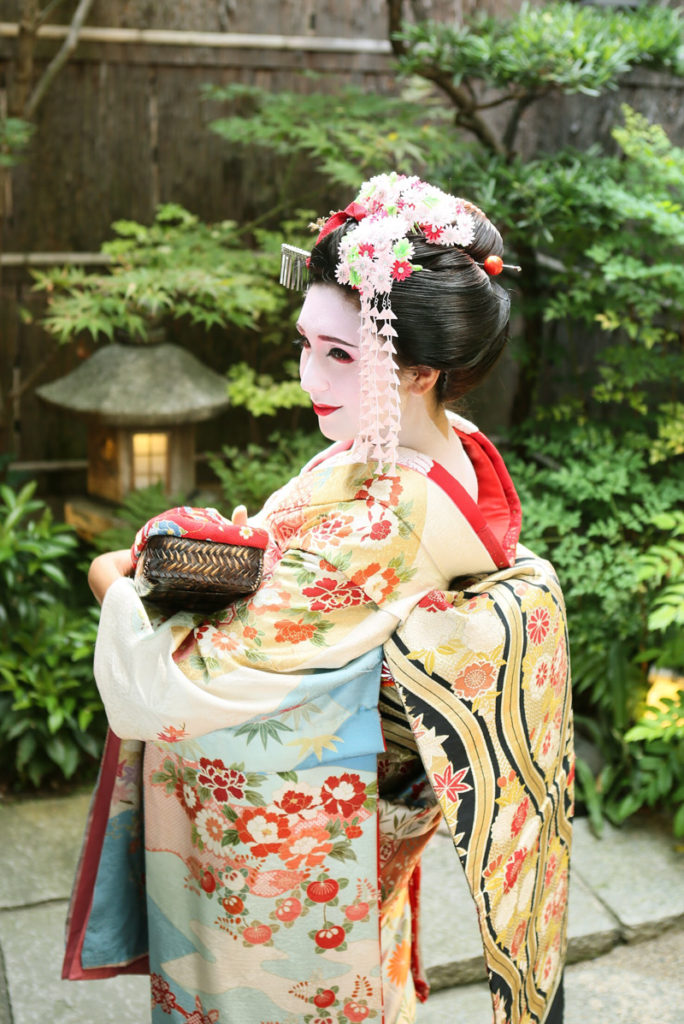
- Introduction: The Art of Kimono Hairstyling
- The Cultural Significance of Traditional Japanese Hairstyles
- Essential Hairstyles for Kimono Wear
- Modern Adaptations of Classic Styles
- Styling Tips for Photography
- Seasonal Considerations in Kyoto
- Professional Styling Services
- DIY Styling Guide
- Common Mistakes to Avoid
- Maintaining Your Traditional Hairstyle
- The Perfect Kyoto Experience
- Conclusion
Introduction: The Art of Kimono Hairstyling
Walking through the historic streets of Kyoto in a beautiful kimono is a dream for many travelers, but achieving that picture-perfect look requires more than just the right fabric and obi. Traditional Japanese hairstyles for kimono are the crowning glory that transforms your appearance from simply wearing traditional clothing to embodying the essence of Japanese elegance.
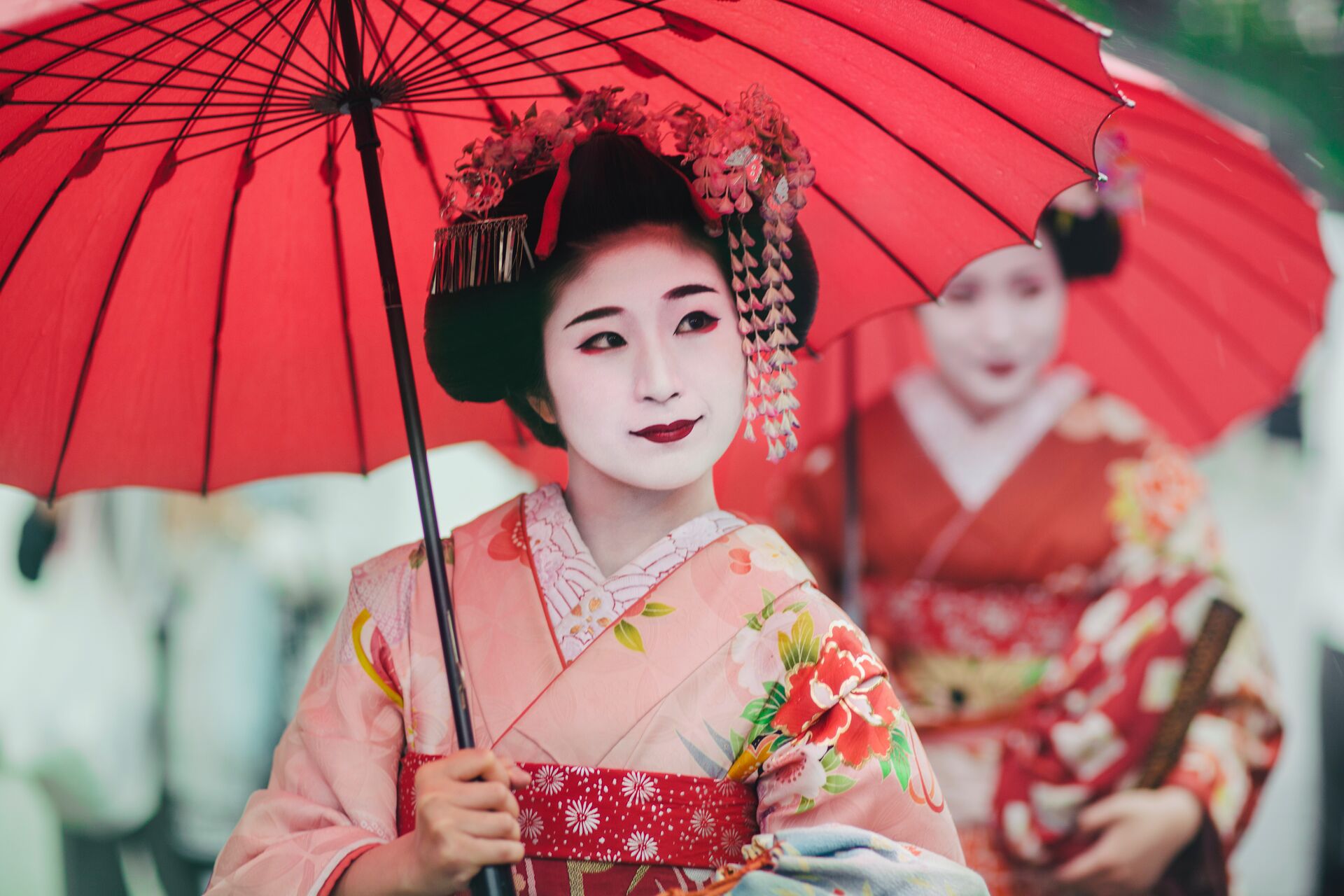
Whether you’re planning a photoshoot in Kyoto’s stunning temples, strolling through the bamboo groves of Arashiyama, or experiencing a traditional tea ceremony, the right hairstyle can make all the difference. These carefully crafted styles have been perfected over centuries, each carrying deep cultural meaning while creating breathtaking visual harmony with the kimono’s flowing lines.
In this comprehensive guide, we’ll explore the most stunning traditional Japanese hairstyles that will elevate your kimono experience and ensure you look absolutely radiant on camera. From the elaborate coiffures of geishas to more accessible modern interpretations, you’ll discover how to choose and style the perfect hairdo for your Kyoto adventure.
The Cultural Significance of Traditional Japanese Hairstyles
Historical Origins and Evolution
Traditional Japanese hairstyles, known as nihongami, have roots stretching back over a thousand years. During the Heian period (794-1185), elaborate hairstyles became symbols of status, beauty, and cultural refinement. These styles evolved through various historical periods, each era contributing unique elements that we still see in modern interpretations.

The art of hairstyling in Japan was never merely about appearance – it was a form of cultural expression. Each twist, pin, and ornament carried meaning, from indicating marital status to representing seasonal changes. In Kyoto, the ancient capital of Japan, these traditions have been particularly well-preserved, making it the perfect place to experience authentic Japanese hairstyling.
Symbolism in Hair Ornaments

Kanzashi (hair ornaments) play a crucial role in traditional Japanese hairstyles for kimono. These exquisite accessories aren’t just decorative – they’re deeply symbolic. Cherry blossom kanzashi represents spring and renewal, while chrysanthemum designs symbolize autumn and longevity. Understanding these meanings helps you choose appropriate ornaments that enhance both your hairstyle and your understanding of Japanese culture.
The placement of kanzashi also follows specific rules. Traditional styles often feature multiple ornaments arranged in precise patterns, creating visual balance and drawing attention to the wearer’s face in the most flattering way possible.
Essential Hairstyles for Kimono Wear
1. Shimada Mage (島田髷)
The Shimada mage is perhaps the most iconic of all traditional Japanese hairstyles for kimono. This elegant updo features a distinctive topknot that creates beautiful height and structure, perfectly complementing the kimono’s vertical lines. The style originated in the Edo period and remains a favorite for formal occasions and photography.
Key Characteristics:
- High, rounded topknot secured with multiple pins
- Smooth, sleek sides that frame the face
- Traditional requires natural hair, but modern versions can use extensions
- Pairs beautifully with formal kimono and elaborate obi
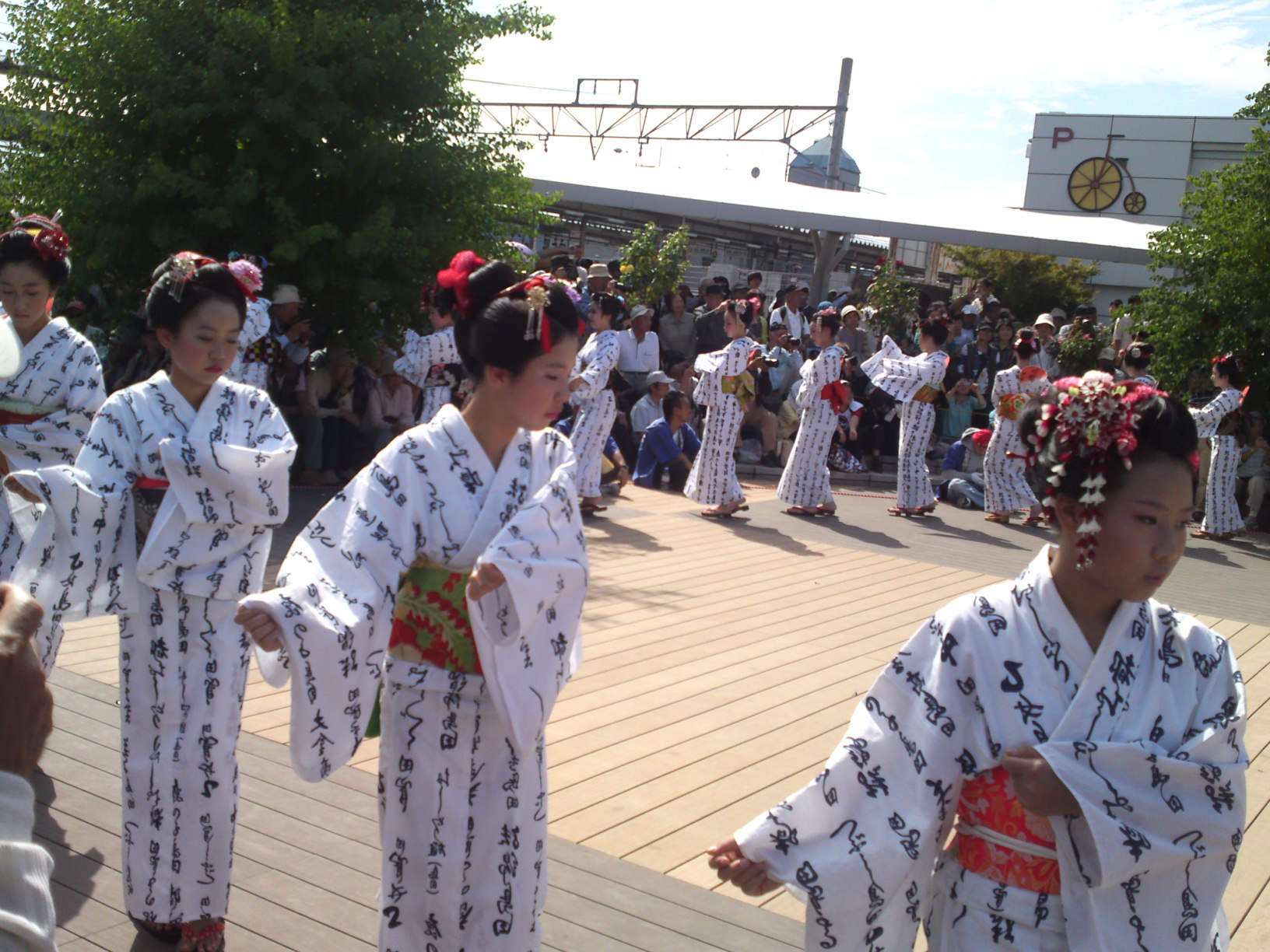
The Shimada mage is particularly stunning when photographed against Kyoto’s traditional architecture. The height of the style creates beautiful proportions when captured against temple gates or in bamboo forests.
2. Tsubushi Shimada (潰し島田)
A more relaxed variation of the classic Shimada, the Tsubushi Shimada offers a softer, more approachable look while maintaining traditional elegance. This style features a lower, more flattened topknot that’s easier to achieve and more comfortable for extended wear.
Perfect for:
- Casual kimono experiences
- Day-long sightseeing in Kyoto
- First-time kimono wearers
- Modern interpretations of traditional dress
3. Marumage (丸髷)
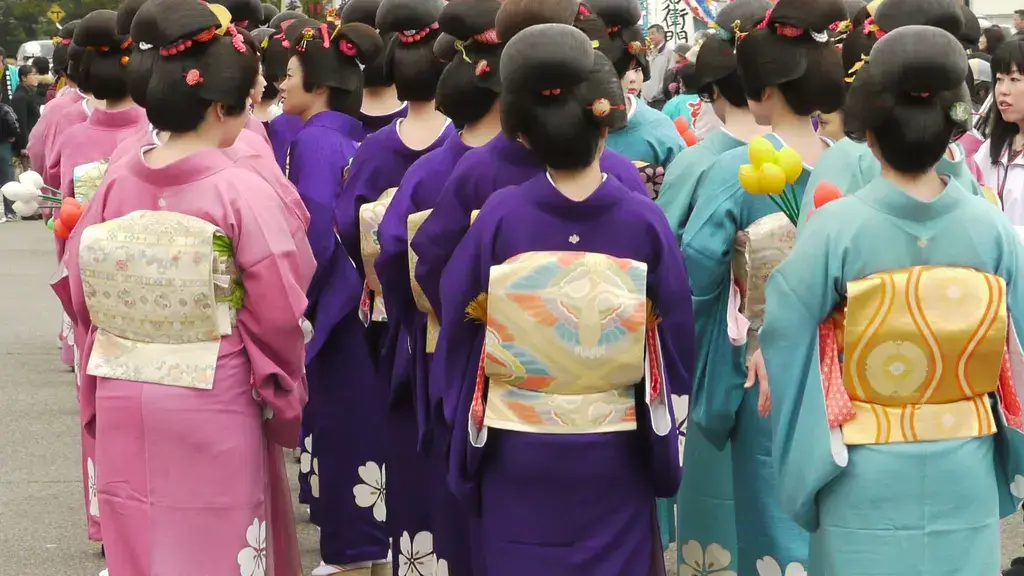
The Marumage is the classic married woman’s hairstyle in traditional Japan. This sophisticated updo features a smooth, dome-like shape that creates an elegant silhouette. While traditionally worn by married women, modern styling has made this beautiful hairstyle accessible to anyone seeking refined elegance.
Styling Elements:
- Smooth, rounded shape without the high topknot
- Secured low on the head for comfort
- Often decorated with subtle, elegant kanzashi
- Complements both formal and semi-formal kimono
4. Momoware (桃割れ)
The Momoware style is characterized by its distinctive center part and smooth, sculpted sides. This hairstyle creates a heart-shaped silhouette that’s both youthful and elegant, making it perfect for younger women or those seeking a more playful traditional look.
Unique Features:
- Clean center part that extends to the nape
- Hair pulled back smoothly on both sides
- Can be styled with or without a topknot
- Excellent for showcasing beautiful kanzashi
5. Sakko (先笄)
The Sakko is a formal style traditionally worn by maiko (apprentice geishas) and is incredibly striking for photography. This elaborate hairstyle features intricate twists and turns that create a sculpture-like appearance, making it perfect for special occasions and professional photoshoots.
Distinctive Elements:
- Complex arrangement of twists and loops
- Requires significant skill to create
- Often features elaborate kanzashi arrangements
- Best suited for very formal kimono
Modern Adaptations of Classic Styles
Simplified Traditional Styles
While authentic traditional Japanese hairstyles for kimono can be complex and time-consuming to create, modern adaptations make these beautiful styles more accessible. Contemporary stylists have developed simplified versions that capture the essence of traditional hairstyles while being more practical for today’s lifestyle.
Modern Shimada Variations:
- Uses hair extensions for volume and length
- Simplified pinning techniques
- Incorporated modern hair accessories alongside traditional kanzashi
- Adapted for different hair types and textures
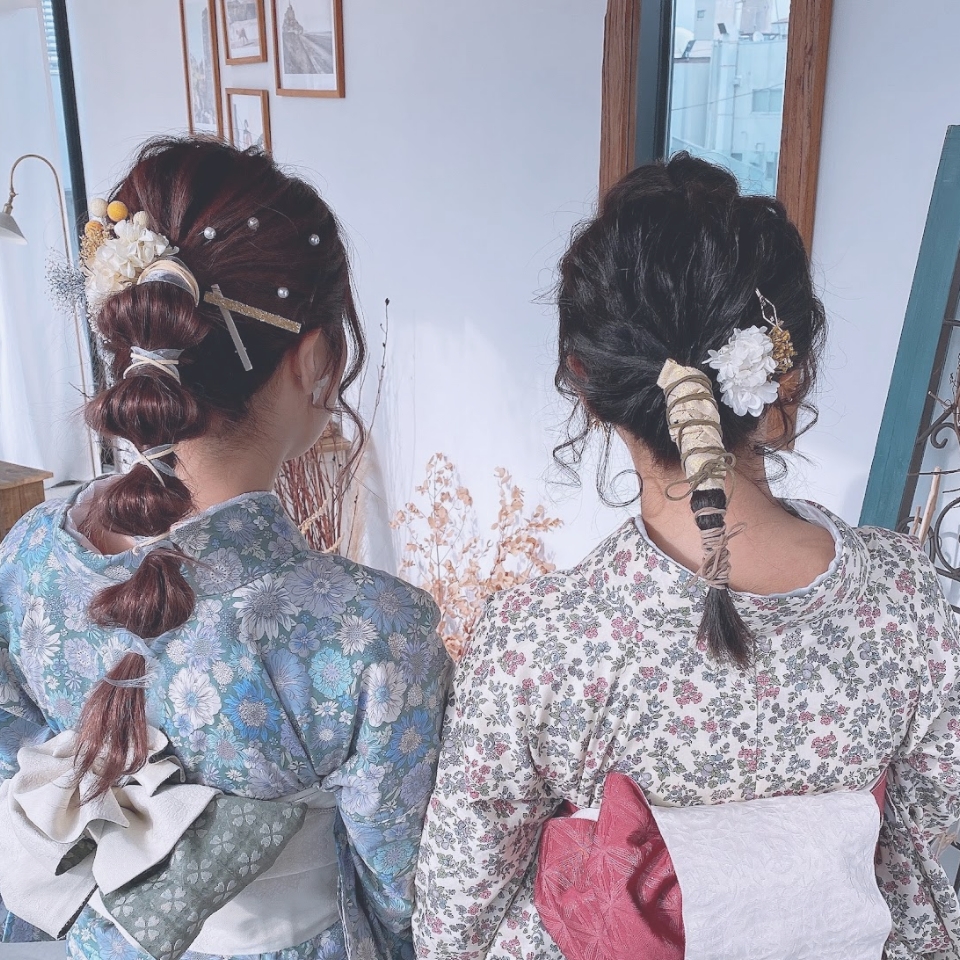
Fusion Styles
Creative stylists in Kyoto have developed fusion styles that blend traditional Japanese elements with contemporary techniques. These styles maintain the elegance and cultural significance of traditional hairstyles while offering more flexibility and comfort.
Popular Fusion Elements:
- Braided accents incorporated into traditional updos
- Modern hair accessories mixed with traditional kanzashi
- Relaxed interpretations suitable for casual kimono wear
- Styles adapted for shorter hair lengths
Styling Tips for Photography
Camera-Ready Hairstyles
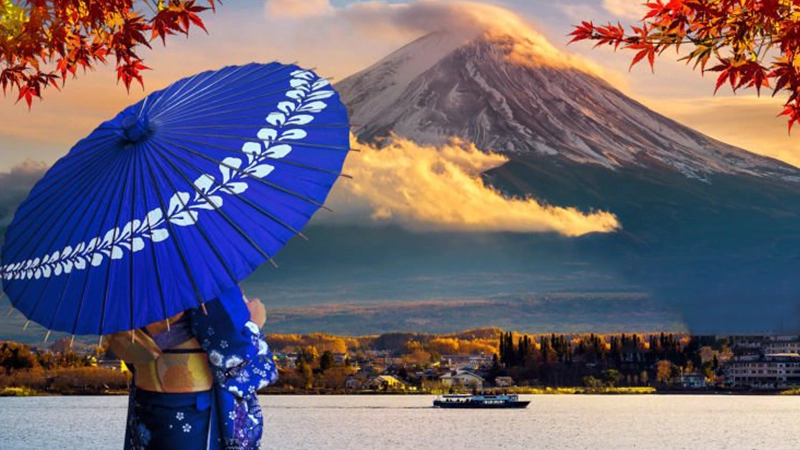
When planning your kimono photoshoot in Kyoto, certain hairstyles photograph better than others. Traditional Japanese hairstyles for kimono that create clean lines and interesting shapes tend to be most photogenic, especially when captured against Kyoto’s stunning backdrops.
Photography Considerations:
- Height and dimension create interesting silhouettes
- Smooth, polished surfaces reflect light beautifully
- Strategic kanzashi placement draws the eye
- Side angles showcase the hairstyle’s structure
Backdrop Compatibility
Different hairstyles complement various Kyoto locations:
- Temple Settings: Formal styles like Shimada mage create beautiful contrast against temple architecture
- Bamboo Groves: Softer styles like Tsubushi Shimada complement the natural environment
- Traditional Streets: Classic styles enhance the historical atmosphere
- Garden Settings: Ornate styles with seasonal kanzashi match the natural beauty
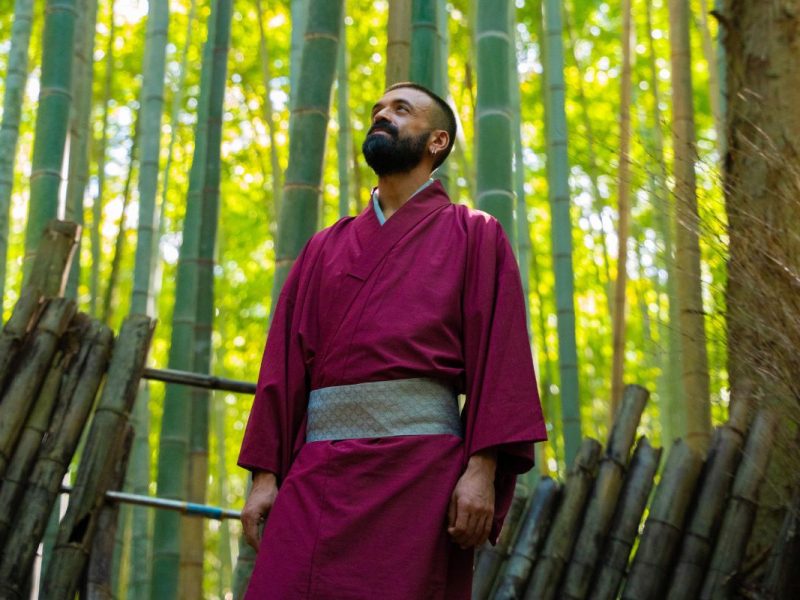
Lighting Considerations
Traditional Japanese hairstyles for kimono feature smooth, sculpted surfaces that can be dramatically enhanced by proper lighting. When booking your photoshoot, consider how different times of day will affect your hairstyle’s appearance.
Golden Hour Benefits:
- Soft light enhances the texture of traditional hairstyles
- Kanzashi catch and reflect warm light beautifully
- Creates romantic, ethereal atmosphere
- Complements the natural beauty of Kyoto locations
Seasonal Considerations in Kyoto
Spring Styling (March-May)
Spring in Kyoto brings cherry blossoms and renewed energy. Traditional Japanese hairstyles for kimono during this season often incorporate sakura-themed kanzashi and lighter, more youthful styles.
Recommended Styles:
- Momoware with cherry blossom kanzashi
- Simplified Shimada with pink and white ornaments
- Fresh, clean lines that complement spring kimono colors
Seasonal Accessories:
- Cherry blossom kanzashi in various stages of bloom
- Butterfly ornaments symbolizing transformation
- Soft pink and white color palettes
Summer Styling (June-August)
Kyoto’s humid summers require hairstyles that are both beautiful and practical. Updos keep hair off the neck while maintaining elegance, making traditional styles particularly suitable.
Summer-Appropriate Styles:
- Higher updos for better airflow
- Minimal layering to reduce heat retention
- Focus on clean, simple lines
- Nautical-themed kanzashi for summer festivals
Autumn Styling (September-November)
Autumn in Kyoto is renowned for its stunning fall foliage. Traditional Japanese hairstyles for kimono during this season often feature rich, warm colors and nature-inspired ornaments.
Autumn Elements:
- Chrysanthemum kanzashi in deep oranges and reds
- Maple leaf ornaments
- Richer, more complex hairstyles
- Warm color palettes that complement fall kimono
Winter Styling (December-February)
Winter styling focuses on elegance and warmth. Traditional hairstyles during this season often feature more elaborate ornaments and richer colors.
Winter Characteristics:
- Formal styles for New Year celebrations
- Plum blossom kanzashi (winter’s first flowers)
- Silver and white accents
- More elaborate, celebration-worthy styles
Professional Styling Services
Kyoto’s Traditional Salons
Kyoto is home to numerous professional salons specializing in traditional Japanese hairstyles for kimono. These establishments offer authentic styling services using traditional techniques passed down through generations.
What to Expect:
- Consultation to choose the perfect style
- Professional application of traditional techniques
- High-quality kanzashi and accessories
- Expertise in camera-ready styling

Booking Your Styling Session
When planning your Kyoto kimono experience, booking a professional styling session ensures you’ll achieve the perfect traditional look. Many salons offer packages that include kimono rental, hairstyling, and even guided photography sessions.
Booking Tips:
- Reserve in advance, especially during peak seasons
- Communicate your preferences and occasion
- Ask about photography-specific styling
- Inquire about traditional vs. modern interpretations
For the ultimate kimono and hairstyling experience in Kyoto, consider professional photography services that specialize in traditional Japanese styling. AllPhoto Kyoto offers expert photography services that capture the beauty of traditional Japanese hairstyles for kimono in Kyoto’s most stunning locations.
DIY Styling Guide
Basic Tools and Supplies
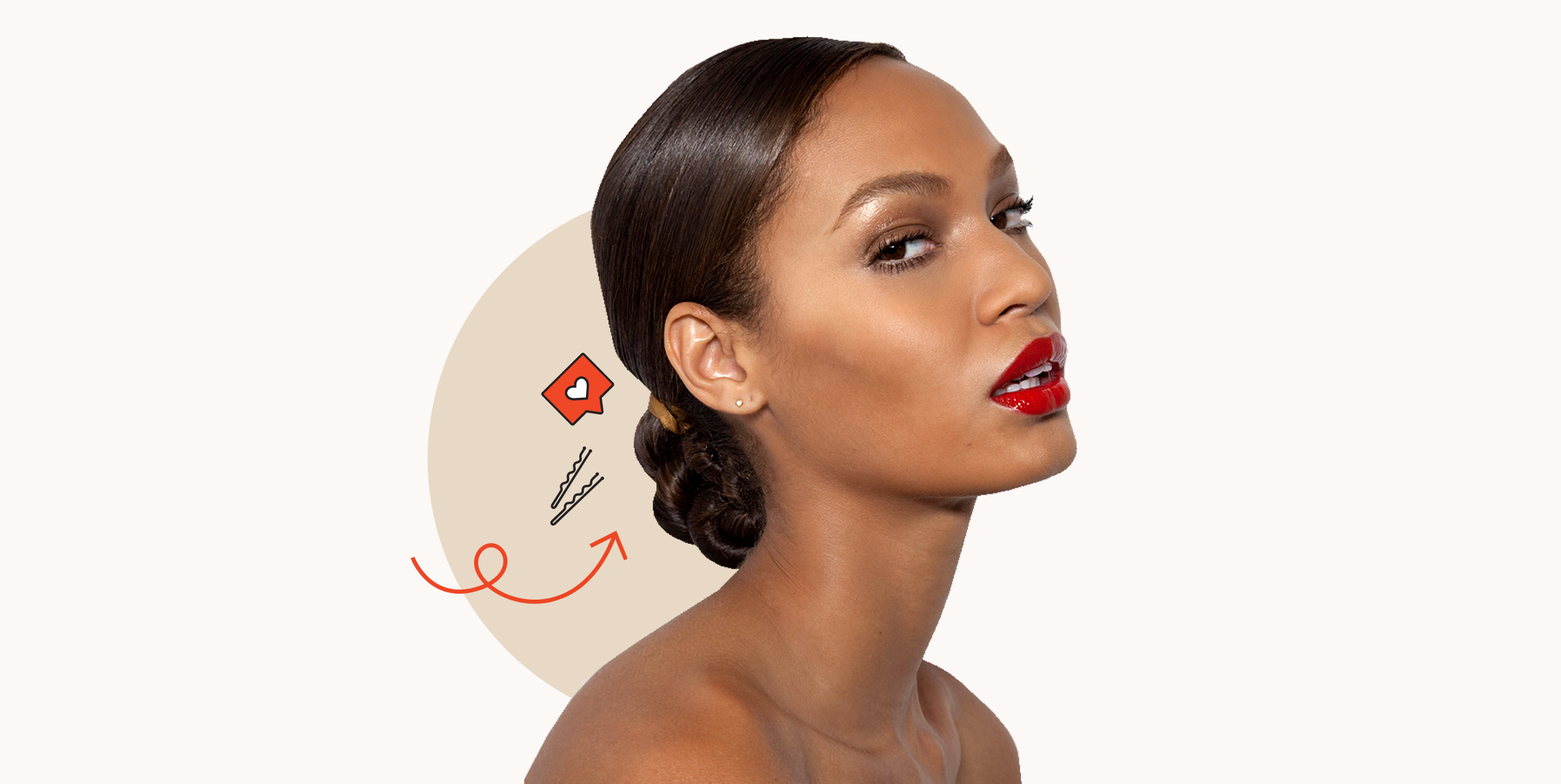
Creating traditional Japanese hairstyles for kimono at home requires specific tools and supplies. While professional results take practice, basic versions of these styles can be achieved with patience and the right equipment.
Essential Tools:
- Hair elastic bands (preferably clear or matching hair color)
- Bobby pins in various sizes
- Hair padding (for volume)
- Styling wax or pomade
- Wide-tooth comb
- Hair spray for hold
Kanzashi and Accessories:
- Start with simple designs
- Choose colors that complement your kimono
- Consider seasonal appropriateness
- Invest in quality pieces that will photograph well
Step-by-Step Basic Shimada
Creating a simplified Shimada style at home:
- Preparation: Start with clean, slightly damp hair
- Sectioning: Part hair cleanly and smooth back
- Creating Volume: Add padding at the crown for height
- Forming the Topknot: Twist hair up and secure with pins
- Smoothing: Use pomade to create sleek surfaces
- Finishing: Add kanzashi and set with spray
Troubleshooting Common Issues
- Hair Too Short: Use extensions or choose styles suitable for shorter hair
- Hair Too Fine: Add texturizing products and padding for volume
- Slipping Pins: Use bobby pins that match your hair color and cross them for security
- Uneven Sides: Take time to measure and adjust symmetry
Common Mistakes to Avoid
Styling Errors
When creating traditional Japanese hairstyles for kimono, several common mistakes can detract from the overall look:
- Over-Accessorizing: While kanzashi are beautiful, using too many can create a cluttered appearance
- Ignoring Proportion: The hairstyle should complement your face shape and body proportions
- Rushing the Process: Traditional styles require patience and attention to detail
- Wrong Seasonal Choices: Mismatched seasonal elements can appear inauthentic
Cultural Sensitivity
When wearing traditional Japanese hairstyles for kimono, it’s important to approach the practice with respect and understanding:
- Research the Significance: Understand the cultural meaning behind different styles
- Choose Appropriate Occasions: Some styles are reserved for specific ceremonies or age groups
- Show Respect: Approach traditional styling as a way to honor Japanese culture
- Learn Properly: Invest time in learning correct techniques rather than attempting shortcuts
Photography Pitfalls
Common mistakes when photographing traditional hairstyles:
- Poor Angles: Not showcasing the hairstyle’s best features
- Competing Elements: Busy backgrounds that detract from the hairstyle
- Harsh Lighting: Unflattering light that doesn’t enhance the style’s beauty
- Ignoring Movement: Not capturing the dynamic elements of the hairstyle
Maintaining Your Traditional Hairstyle
Longevity Tips
Traditional Japanese hairstyles for kimono are designed to last throughout long ceremonial occasions. Here are tips for maintaining your style:
During Wear:
- Avoid touching or adjusting unnecessarily
- Use setting spray for humid conditions
- Carry emergency bobby pins for quick fixes
- Be mindful of wind and weather conditions
For Photography:
- Schedule touch-ups between location changes
- Bring a stylist for complex arrangements
- Use professional-grade setting products
- Plan shooting schedule around style durability
Weather Considerations
Kyoto’s climate can affect traditional hairstyles differently throughout the year:
- Humidity Management: Use anti-humidity products in summer
- Wind Protection: Secure styles extra firmly for outdoor photography
- Rain Preparedness: Have backup styling options for wet weather
- Temperature Adaptation: Adjust complexity based on comfort needs
The Perfect Kyoto Experience
Combining Hairstyling with Sightseeing
The best traditional Japanese hairstyles for kimono are designed to last throughout a full day of activities. Plan your Kyoto itinerary to maximize both your styling investment and your cultural experience.
Recommended Kyoto Locations for Traditional Hairstyle Photography:
- Kinkaku-ji (Golden Pavilion): The golden temple provides a stunning backdrop that complements the elegance of traditional hairstyles
- Fushimi Inari Shrine: The thousands of torii gates create dramatic perspective shots
- Arashiyama Bamboo Grove: Natural beauty that enhances the organic elements of traditional styling
- Gion District: Historic streets where traditional hairstyles feel perfectly at home
- Kiyomizu-dera Temple: Elevated views and traditional architecture
Creating Lasting Memories
Your experience with traditional Japanese hairstyles for kimono in Kyoto should be both beautiful and meaningful. Take time to:
- Learn the History: Understand the cultural significance of your chosen style
- Document the Process: Capture the transformation from modern to traditional
- Embrace the Experience: Allow yourself to feel the elegance and grace of traditional Japanese beauty
- Share Respectfully: When sharing photos, include information about the cultural significance
Conclusion
Traditional Japanese hairstyles for kimono represent centuries of artistic refinement and cultural significance. Whether you choose the elegant complexity of a Shimada mage or the gentle beauty of a Momoware, these timeless styles will elevate your kimono experience and create stunning photographs that capture the essence of Japanese beauty.
Kyoto, with its preserved traditional architecture and cultural heritage, provides the perfect backdrop for experiencing these magnificent hairstyles. From the quiet temples to the bustling traditional districts, every corner of this ancient city offers opportunities to showcase the beauty of traditional Japanese styling.

Experience the ultimate in traditional Japanese beauty with professional photography services in Kyoto. AllPhoto Kyoto specializes in capturing the elegance of traditional hairstyles and kimono in Kyoto’s most breathtaking locations.
Remember that the journey of wearing traditional Japanese hairstyles for kimono is as important as the destination. Take time to appreciate the artistry, understand the cultural significance, and embrace the transformation that comes with adopting these beautiful traditional styles.
For those seeking to capture the perfect moment where traditional beauty meets Kyoto’s timeless charm, professional photography services can help preserve these memories forever. The combination of expertly styled traditional Japanese hairstyles for kimono and Kyoto’s stunning locations creates photographs that will be treasured for generations.
Whether you’re visiting Kyoto for a special occasion, cultural exploration, or simply to experience the beauty of traditional Japanese styling, the perfect hairstyle awaits. Embrace the elegance, honor the tradition, and let the timeless beauty of traditional Japanese hairstyles for kimono transform your Kyoto experience into something truly unforgettable.
Experience the ultimate in traditional Japanese beauty with professional photography services in Kyoto. AllPhoto Kyoto specializes in capturing the elegance of traditional hairstyles and kimono in Kyoto’s most breathtaking locations.



コメント